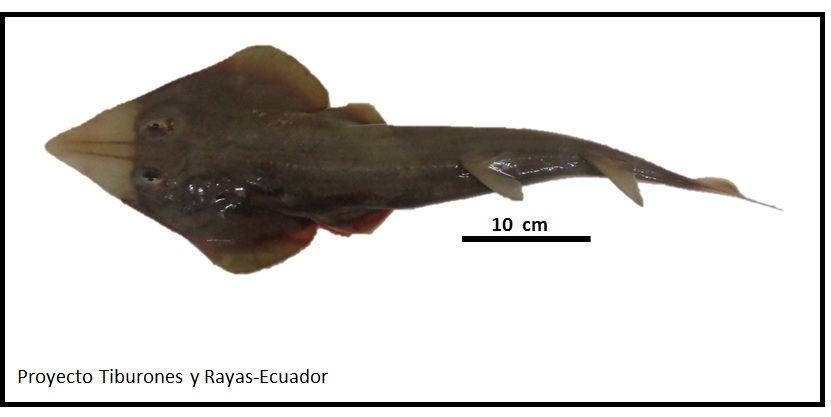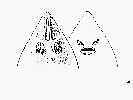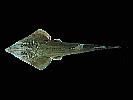Pseudobatos leucorhynchus
(Günther, 1866)
Whitesnout guitarfish
Classification: Elasmobranchii Rhinopristiformes Rhinobatidae
Reference of the original description
On the fishes of the states of Central America, founded upon specimens collected in fresh and marine waters of various parts of that country by Messrs. Salvin and Godman and Capt. J. M. Dow. Proceedings of the Zoological Society of London, 1866, 600–604
On the fishes of the states of Central America, founded upon specimens collected in fresh and marine waters of various parts of that country by Messrs. Salvin and Godman and Capt. J. M. Dow. Proceedings of the Zoological Society of London, 1866, 600–604
Image of the original description
No image in first description.
No image in first description.
Synonyms / new combinations and misspellings
Psamobatos leucorhynchus, Rhinobates leucorhynchus, Rhinobatos leucorhynchus, Rhinobatus leucorhynchus
Psamobatos leucorhynchus, Rhinobates leucorhynchus, Rhinobatos leucorhynchus, Rhinobatus leucorhynchus
Description :
Citation: Pseudobatos leucorhynchus (Günther, 1866): In: Database of modern sharks, rays and chimaeras, www.shark-references.com, World Wide Web electronic publication, Version 01/2026
Please send your images of "Pseudobatos leucorhynchus" to info@shark-references.com

Pseudobatos leucorhynchus (Günther, 1866) © Dra. Maribel Carrera Fernández, Universidad Laica Eloy Alfaro de Manabí, Manta, Ecuador

Pseudobatos leucorhynchus (Günther, 1866) © Dra. Maribel Carrera Fernández, Universidad Laica Eloy Alfaro de Manabí, Manta, Ecuador
Common names
 Guitarra,
Guitarra,  Guitarra trompa blanca,
Guitarra trompa blanca,  Poisson-guitare nez blanc,
Poisson-guitare nez blanc,  Whitenose guitarfish,
Whitenose guitarfish,  Whitesnout guitarfish
Whitesnout guitarfish
 Guitarra,
Guitarra,  Guitarra trompa blanca,
Guitarra trompa blanca,  Poisson-guitare nez blanc,
Poisson-guitare nez blanc,  Whitenose guitarfish,
Whitenose guitarfish,  Whitesnout guitarfish
Whitesnout guitarfish
Biology
Exhibit ovoviparity (aplacental viviparity), with embryos feeding initially on yolk, then receiving additional nourishment from the mother by indirect absorption of uterine fluid enriched with mucus, fat or protein through specialised structures [733].
Exhibit ovoviparity (aplacental viviparity), with embryos feeding initially on yolk, then receiving additional nourishment from the mother by indirect absorption of uterine fluid enriched with mucus, fat or protein through specialised structures [733].
Size / Weight / Age
TL min/max: 21,0 cm/118,0 cm, Weight (g) min/max: 20 g/7400 g (Database: 460 specimens, collected between October 2013 and August 2014 from the artisanal fisheries in ‘Los Esteros’ located in Manta City, Ecuadorian Pacific (0° 56' 59'' S; 80° 42' 34'' W) and from ‘La Poza’ located in Santa Rosa City (02° 13'0'' S; 80° 58' 0'' W)) [22773]
TL min/max: 21,0 cm/118,0 cm, Weight (g) min/max: 20 g/7400 g (Database: 460 specimens, collected between October 2013 and August 2014 from the artisanal fisheries in ‘Los Esteros’ located in Manta City, Ecuadorian Pacific (0° 56' 59'' S; 80° 42' 34'' W) and from ‘La Poza’ located in Santa Rosa City (02° 13'0'' S; 80° 58' 0'' W)) [22773]
Habitat
demersal; marine
demersal; marine
Remarks
shark-references Species-ID=14582;
shark-references Species-ID=14582;
Parasites (arranged by Jürgen Pollerspöck)
Cestoda
Trematoda
Cestoda
Trematoda


















